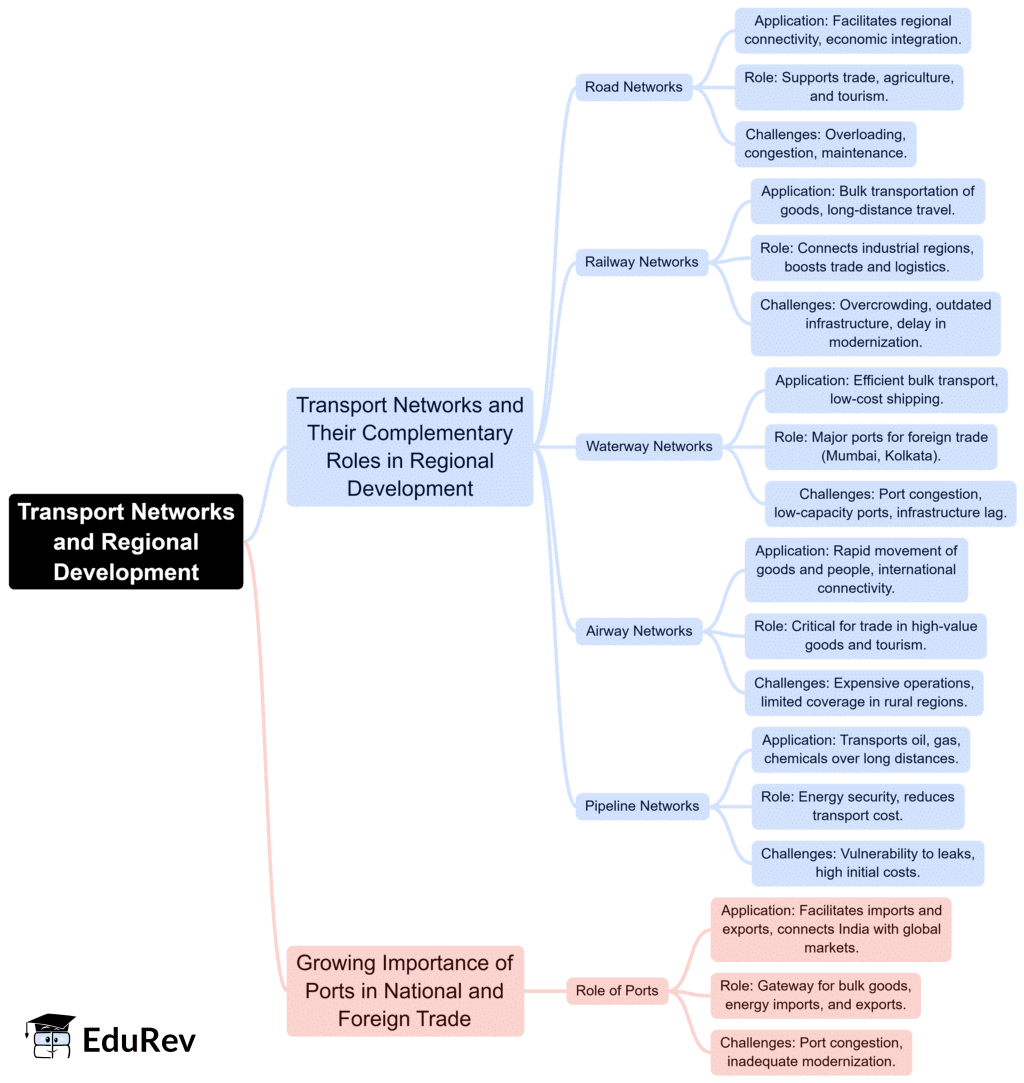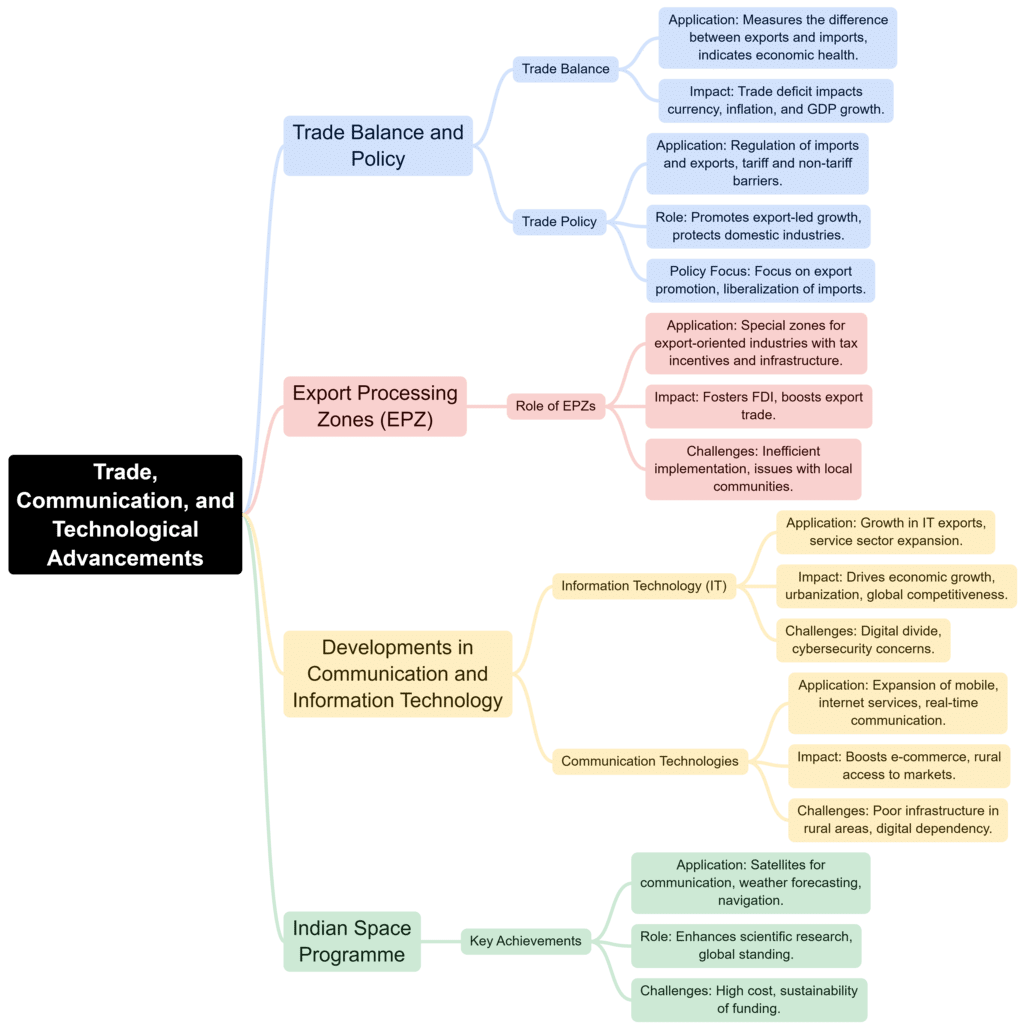UPSC Exam > UPSC Notes > Geography Optional for UPSC > Mind Map: Transport, Communication & Trade
Mind Map: Transport, Communication & Trade | Geography Optional for UPSC PDF Download


The document Mind Map: Transport, Communication & Trade | Geography Optional for UPSC is a part of the UPSC Course Geography Optional for UPSC.
All you need of UPSC at this link: UPSC
|
303 videos|635 docs|252 tests
|
FAQs on Mind Map: Transport, Communication & Trade - Geography Optional for UPSC
| 1. What are the key modes of transport in India and their significance? |  |
Ans. The key modes of transport in India include roadways, railways, waterways, and airways. Roadways are crucial for short-distance travel and connectivity between rural and urban areas. Railways play a vital role in long-distance travel and freight movement, being one of the most economical modes. Waterways, though underutilized, are important for trade, especially in coastal and riverine areas. Air transport is significant for fast travel and connecting major cities, boosting tourism and trade.
| 2. How does communication impact trade in India? |  |
Ans. Communication is essential for trade as it facilitates information exchange between buyers and sellers. Efficient communication networks, including telecommunication and the internet, enable businesses to reach wider markets, negotiate deals, and manage logistics. Improved communication reduces delays and misunderstandings, enhancing overall trade efficiency and fostering economic growth.
| 3. What role does infrastructure play in transportation and trade? |  |
Ans. Infrastructure is critical for efficient transportation and trade. Well-developed roads, railways, ports, and airports enable smooth movement of goods and passengers. Adequate infrastructure reduces transit time and costs, making trade more competitive. Investments in infrastructure enhance connectivity, support economic development, and attract foreign investment, ultimately boosting trade performance.
| 4. What are the challenges faced by the transport sector in India? |  |
Ans. The transport sector in India faces several challenges, including traffic congestion, inadequate infrastructure, safety concerns, and environmental issues. Poor maintenance of roads and rail networks leads to inefficiencies. Additionally, the lack of integrated transport systems and reliance on traditional modes hampers growth. Addressing these challenges is essential for enhancing transport efficiency and supporting economic development.
| 5. How has globalization influenced trade and transport in India? |  |
Ans. Globalization has significantly influenced trade and transport in India by opening up markets and increasing competition. It has led to the adoption of modern logistics practices and technologies, enhancing supply chain management. The growth of e-commerce has also transformed trade dynamics, requiring efficient transport solutions. As a result, India's trade volume has expanded, integrating it further into the global economy.
Related Searches















